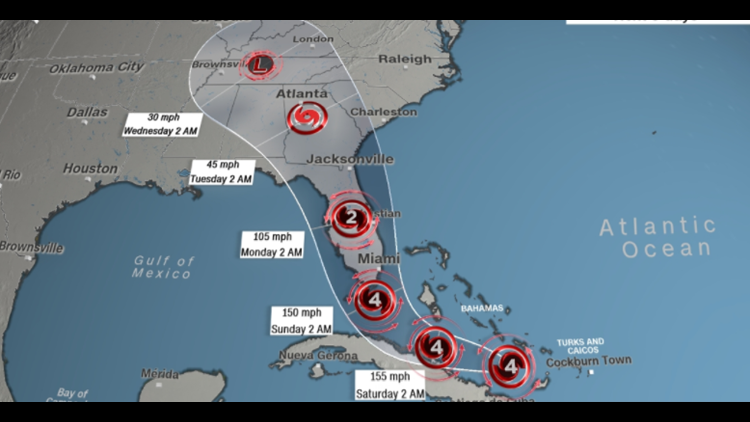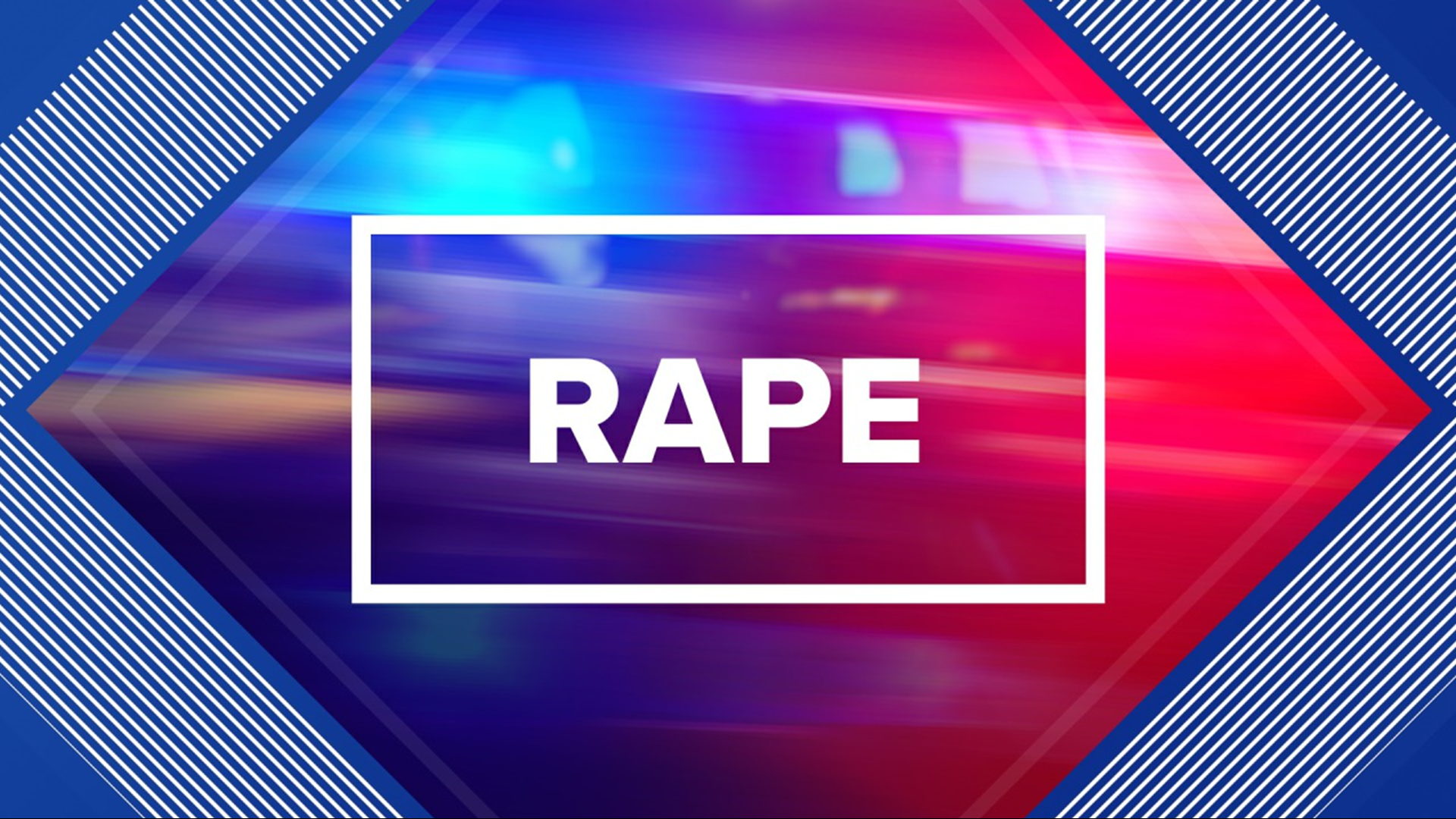MIAMI — Hurricane Irma began battering parts of Cuba and the central Bahamas on Friday afternoon after leaving a trail of devastation in the Caribbean, while an anxious South Florida and Miami prepared for what could be a major hit by the weekend.
Track the hurricane with the WNEP interactive hurricane tracker here.
Get a live look at Hurricane Irma with webcams from Earthcam here.
Irma, now a Category 4 storm with sustained winds of 155 mph, slammed the Turks and Caicos and southeastern Bahamas early Friday before its powerful core headed between northern Cuba and central Bahamas.
At least 24 people were killed this week as Irma pummeled northern Caribbean islands such as Barbuda and the Virgin Islands. In Puerto Rico, hundreds of thousands of people — nearly 70% of the US territory’s utility customers — were left without power, the governor’s office said.
Irma is expected be near the Florida Keys and South Florida by early Sunday as at least a Category 4 hurricane, and many residents there are moving inland or to shelters. Some counties are under evacuation orders, but “all Floridians should be prepared to evacuate soon,” Gov. Rick Scott said Friday.
“Today is the day to do the right thing for your family. Get inland for safety,” Scott said at a news conference.
At its peak, a then-Category 5 Irma sustained maximum wind speeds of at least 185 mph for longer (37 hours) than any storm on record. The Red Cross estimates 1.2 million people have already been battered by the storm.
Here are the latest developments
— Around 2 p.m. ET, Irma’s center was about 225 miles east of Caibarien, Cuba, moving west with maximum sustained winds of 155 mph. Hurricane-force winds could be felt as far as 70 miles from the center.
— Irma’s bands whipped the Turks and Caicos and the southeastern Bahamas on Thursday night and Friday morning, and is forecast to move between the north coast of Cuba and the central Bahamas through Saturday.
— Irma led to at least 24 deaths in the Caribbean, including nine in unspecified French territories, one on Barbuda, one at the British overseas territory of Anguilla, two in Dutch-administered St. Maarten, four in the British Virgin Islands, four on the US Virgin Islands, and three in Puerto Rico. Officials didn’t specify which French Caribbean territories had nine deaths but earlier indicated some had been on the island of St. Martin.
— The three deaths in Puerto Rico were at least loosely linked to Irma. One person died from a fall while being taken to a shelter; another was killed in a car crash; a third died of electrocution, the governor said.
— In the British Virgin Islands, “roads are impassable, and there is currently no access to some areas,” Gov. Gus Jaspert said.
— Hurricane warnings are in effect for parts of central Cuba, and the southeastern, central and northwestern Bahamas. Hurricane warnings also are in effect for South Florida, from Jupiter Inlet on the east coast, southward around the Florida Peninsula to Bonita Beach on the west. The warning includes the Florida Keys, Lake Okeechobee and Florida Bay.
— The Red Cross said as many as 26 million people could be exposed to destructive winds and torrential rain just in the Dominican Republic, Haiti and Cuba.
— Both the French and Dutch portions of the island of St. Martin are suffering looting in the wake of Irma, authorities said.
— Irma could overwhelm parts of the Bahamas, a nation of about 390,000, with storm surges of up to 20 feet — well above the islands’ elevation, CNN meteorologist Chad Myers said.
— Tourists and hundreds of thousands of residents have also been evacuated from parts of Cuba. Usually busy hotels on the northern coast were empty Friday, CNN’s Patrick Oppmann reported from Caibarien. Some have been evacuated to bomb shelters built during the Cuban missile crisis of the 1960s.
Florida and the Southeast prepare for Irma
The National Hurricane Center has warned Irma could “make landfall in southern Florida as a dangerous major hurricane, and bring life-threatening storm surge and wind impacts to much of the state.”
There could be storm surges up to 12 feet in coastal areas, which could “inundate so many low-level houses, especially on the Keys,” Myers said.
US and European forecast models predict the eye could strike the Keys and then the Everglades, west of Miami, on Saturday night into Sunday morning.
“It’s not a question of whether Florida is going to be impacted — it’s a question of how bad Florida is going to be impacted,” Federal Emergency Management Agency Administrator Brock Long said Friday, urging people to heed evacuation orders.
Though the core has the most power, Irma is huge; winds of at least tropical-storm force cover 70,000 square miles — larger than the area of Florida (65,000 square miles). At some point late Saturday into Tuesday, the entire state could see at least hurricane-force gusts of 74 mph and above, CNN’s Myers said.
In Miami-Dade County alone, about 660,000 of its 2.6 million population have been asked to evacuate, Mayor Carlos Gimenez said.
Farther north, on Daytona Beach, Michael Hanna was itching to leave Friday morning but first had to board up his beach apparel store.
“I stayed a little longer than anybody else so I can cover up my business,” he said. “My kids are panicking; my wife, she’s panicking. … (Saturday) by 6 a.m., 7 a.m., we’re going to be on the road, heading to Georgia.”
Irma could cause power outages for weeks in parts of South Florida, and more than 4.1 million customers — or 9 million people — could be affected by outages at some point, Florida Power and Light Co. said. “Our crews will likely have to rebuild parts of the system,” the utility said.
Evacuees stocked up on supplies, waited for hours at gas stations and sat through massive traffic jams.
People also flocked to South Florida airports, but schedules were in flux. More than half of Friday’s flights were canceled at Miami International Airport, and “most of the airlines will suspend flights after (Friday) through Monday, depending on the condition of the airport,” spokesman Greg Chin said.
Florida is not the only state preparing for possible impact. Long, the FEMA administrator, said people from Alabama to North Carolina should watch the storm.
Georgia’s Gov. Nathan Deal declared a state of emergency for 30 counties and has ordered evacuations for coastal areas east of Interstate 95, including Savannah, starting Saturday. The governors of North and South Carolina also declared states of emergency.
Devastation to islands
Irma brought heavy rain and powerful winds Thursday night and Friday morning to the low-lying Turks and Caicos Islands.
Residents of the islands, a British overseas territory with about 35,000 people, were told to stay put.
Desmond Piccolo Henry took shelter in his concrete home with his wife and a friend on one of the islands, Providenciales, as the storm rocked the area early Friday.
“It’s a concrete house, but trust me, it was shaking. My friend was saying, ‘Oh my God, I think God is coming, why are we going through this?’ ”
Henry’s home survived with just a few shingles lost, but people have told him that roofs were torn off nearby and debris crushed some cars. Video he posted to Facebook showed downed tree limbs and other destruction.
The capital island of Grand Turk suffered “quite a bit of damage” Thursday night, including to part of a hospital’s roof, Gov. John Freeman told CNN.
In Puerto Rico, about 56,680 customers were without water, with the island’s northeast hit the hardest, according to Jesus Poupart of the emergency operations center.
After Irma, Hurricane Jose looms
The Caribbean islands already pummeled by Irma have begun assessing the damage, finding shredded buildings, battered cars and streets submerged in water.
Barbuda, one of two major islands in the nation of Antigua and Barbuda, is barely habitable, with about 95% of its buildings damaged, Prime Minister Gaston Browne.
Browne estimated the damage will cost $100 million to fix on the island of 1,800 residents.
“It looks like (a) garbage disposal,” Marlon Carr, a photographer who toured the island with Browne, told CNN on Thursday. “There was rubble and roof galvanized all over the island. It looked like some of the houses … were imploded on.”
Irma’s eye passed directly over Barbuda on Wednesday, and now the northeastern Caribbean nation is anxiously watching Hurricane Jose to the east, which has strengthened to a Category 4 storm.
Antigua and Barbuda, St. Martin and St. Barts are under a hurricane watch for Jose, which could pass close to those islands Saturday. The government called for voluntary evacuations from Barbuda, Browne said.
Irma also badly hit St. Martin with about 50 people reported injured.
Dutch Prime Minister Mark Rutte described the looting situation in St. Maarten, the Dutch portion of the island, as serious, a spokesman for his office said Friday.
The government said emergency flights delivering water and other supplies to the island will be used to take residents and visitors off it.
“Our worst fears have played out in Barbuda and elsewhere,” said Walter Cotte, regional director for the Americas for the Red Cross. “We can’t yet assess the full extent of damage, but we expect that the Red Cross will be delivering extensive support to many thousands over the coming weeks and months.”



